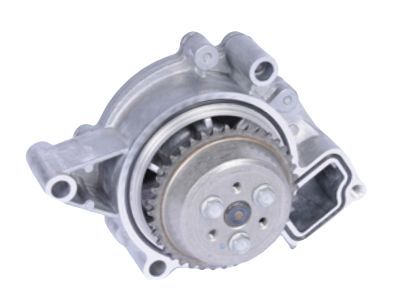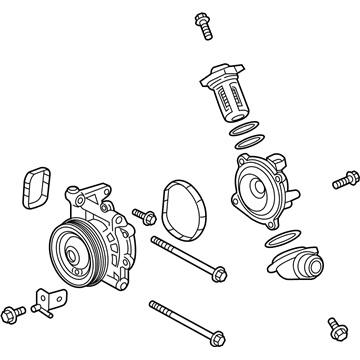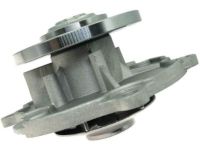My Garage
My Account
Cart
Genuine GMC Terrain Water Pump
H2O Pump- Select Vehicle by Model
- Select Vehicle by VIN
Select Vehicle by Model
orMake
Model
Year
Select Vehicle by VIN
For the most accurate results, select vehicle by your VIN (Vehicle Identification Number).
7 Water Pumps found
GMC Terrain Water Pump Assembly
Part Number: 12630084$187.08 MSRP: $371.20You Save: $184.12 (50%)Ships in 1-3 Business DaysGMC Terrain Pump Assembly, Wat
Part Number: 25201450$220.44 MSRP: $437.39You Save: $216.95 (50%)Ships in 1-2 Business DaysGMC Terrain PUMP ASM-WAT
Part Number: 25205820$153.51 MSRP: $304.58You Save: $151.07 (50%)Ships in 1-2 Business DaysGMC Terrain Auxiliary Water Pump Assembly
Part Number: 23463177$64.05 MSRP: $127.08You Save: $63.03 (50%)GMC Terrain Auxiliary Water Pump Assembly
Part Number: 23330961$87.87 MSRP: $159.76You Save: $71.89 (45%)Ships in 1-2 Business Days
GMC Terrain Water Pump
Water Pump is one of the important parts of the GMC Terrain automobiles; its function is to pump the coolant from the radiator to the engine, where it absorbs the heat produced during combusion. 98% of today's Water Pump can be made of aluminum The Water Pump contain a shaft with bearings, belt driven pulley and an impeller to move the coolant. The common signs that a vehicle-owner may notice a failing Water Pump are in the form of leakage, loud noises from the bearings, and rising engine temperatures. Performance Water Pumps are available for high performance engines that have enhanced transitions of coolant flow and lower power demand compared to ordinary unit. Electric Water Pumps are also available and useful in other features, these include; coolant circulation irrespective of the Engine-RPMs and post-engine shutdown cooling.
Each OEM GMC Terrain Water Pump we offer is competitively priced and comes with the assurance of the manufacturer's warranty for the part. Furthermore, we guarantee the speedy delivery of your orders right to your doorstep. Our hassle-free return policy is also in place for your peace of mind.
GMC Terrain Water Pump Parts Questions & Experts Answers
- Q: What are the signs and consequences of a failure in the water pump on GMC Terrain?A: A failure in the water pump can lead to serious engine damage as it causes overheating. These models have a water pump that is driven by the drivebelt. Water pumps are typically equipped with weep or vent holes, which can leak coolant if there is a failure in the pump seal. To check for leaks, a flashlight and small mirror can be used to locate the hole on the water pump. If the water pump shaft bearings fail, there may be a howling sound while the pump is running, and shaft wear can be felt by rocking the water pump pulley up and down with the drivebelt removed. It is important not to mistake drivebelt slippage, which causes a squealing sound, for water pump bearing failure. Even if a pump shows no outward signs of a problem, such as noise or leakage, it may still need to be replaced. The only sure way to determine this is through removal for close examination. A quick check of water pump performance is to turn on the heater. If the pump is failing, it may not be able to efficiently circulate hot water to the Heater Core as it should.
- Q: How do you replace the water pump on GMC Terrain?A: To remove the condenser on 2007 and earlier models, unclip it. In 2010 and later models, the condenser must be completely removed. Inspect the radiator for leaks and damage, and if necessary, use special techniques for repair. Bugs and dirt can be removed from the radiator by spraying it with a garden hose nozzle from the back side, and it should be flushed out with a garden hose before installation. For installation, guide the condenser/radiator/fan assembly into position, ensuring that the rubber mounts on the bottom are properly seated into the support. Tighten the radiator and air conditioning condenser bracket bolts securely. Fill the cooling system with the proper mixture of antifreeze and water, start the engine, and check for leaks. Allow the engine to reach normal operating temperature, then recheck the coolant level and add more if required. Finally, check the transaxle fluid and add more as needed.

















